Last Updated on March 7, 2024 by
Junnar, famous for being the birthplace of erstwhile warrior king Chhatrapati Shivaji Maharaj needs all the attention. Junnar tourism promises to be fulfilling for all kinds of visitors offering many things to do. An easy drive from Pune to Junnar, there are Junnar caves, Junnar fort, temples and nature exploration, making it a must visit destination.
Having lived in Pune for 2 years, I read about the contributions of Shivaji Maharaj and his legacy. Due to his contributions to the region, he is nothing less than a deity among the crowds of Maharashtra.
Having explored the forts that he ruled near Pune such as Lohagad Fort, Sinhagad Fort, Tikona Fort, I wanted to climb all the others, especially Shivneri Fort where he was born. Unfortunately, I couldn’t visit many forts when I lived in Pune. However, I was recently invited by Maharashtra Tourism for the Hindavi Swarajya Mahotsava, a festival commemorating Chhatrapati Shivaji Maharaj’s 394th birth anniversary.
While I will talk about the festival in the later part of the post, I want to write about what impressed me most and why Junnar tourism needs to be on the visitor’s list.
Table of Contents
ABOUT JUNNAR | HISTORY OF JUNNAR
Located 94 km away from Pune, Shivneri Fort in Junnar is the birthplace of Chhatrapati Shivaji Maharaj. Born on 19 February 1630 at Shivneri Fort, Shivaji Maharaj was an Indian ruler and a member of the Bhonsle Maratha clan. He carved out his own independent kingdom by defeating Adilshahi Sultanate of Bijapur that formed the genesis of the Maratha Empire making this area historically important.
But much before that, Junnar has had a historical significance as it was positioned on a crucial trade route. Numerous excavations and legible inscriptions provide evidence of trade connections between the rulers of ancient Junnar and civilizations like Rome and Greece.
Indications suggest that the area served as a toll gate and a favored resting spot for traders. The inscriptions, believed to date back to the reign of Queen Naganika, have become a focal point of interest for historians. They offer valuable insights into the Satavahana dynasty, helping establish records from that era.
Junnar was also an important seat of power for the Satavahana dynasty of Maharashtra.
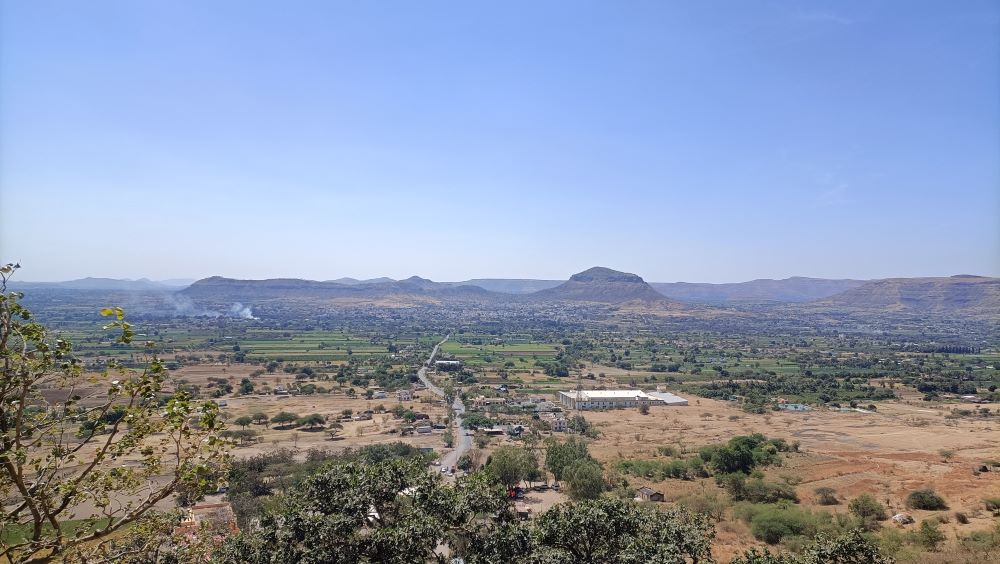
THINGS TO DO IN JUNNAR | JUNNAR TOURISM
While most visitors are day trippers looking for a one day trip from Pune to Junnar, Junnar has a lot of potential and one can easily spend 3 days here. Whether you are an adventure lover, nature enthusiasts, history fanatic or a devotee, there is something for everyone.
Forts in Junnar
Junnar has not one, not two but 7 mountain forts in its vicinity. Shivneri fort, Chavand fort, Nimgiri fort, Narayangad fort, Hadsar fort, Jivdhan fort and Shindola fort are all present in and around Junnar. While most of them are in ruins, the entry gates are intact. The top of all forts promises splendid views of the Sahyadris and the biodiversity around the foothills of these forts makes nature lovers ask for more.
There are still inscriptions on the fort walls that tell the tales of the bygone era and one needs a guide to descript it.
Shivneri Fort is the most popular place to visit when it comes to Junnar Tourism. Visitors need to cross 7 doors to get to the top of the fort. There is a lot to be explored at Shivneri and it’s ideal for people who love historical places. From the base, one has to climb around 350-400 steps to reach the top which takes approximately 2 hours at leisure.
Some of the must visit places in Shivneri fort are Shivai Temple – the temple of goddess Shivai after whom Chhatrapati Shivaji Maharaj was named, Kadelot – a point on the fort from where criminals were thrown off the fort as a punishment, Ambarkhana – food storage area, Ganga and Jamuna – the freshwater springs on the fort, Statue of Jijabai and Chhatrapati Shivaji Maharaj and Badami Talav – a water reservoir on the fort.
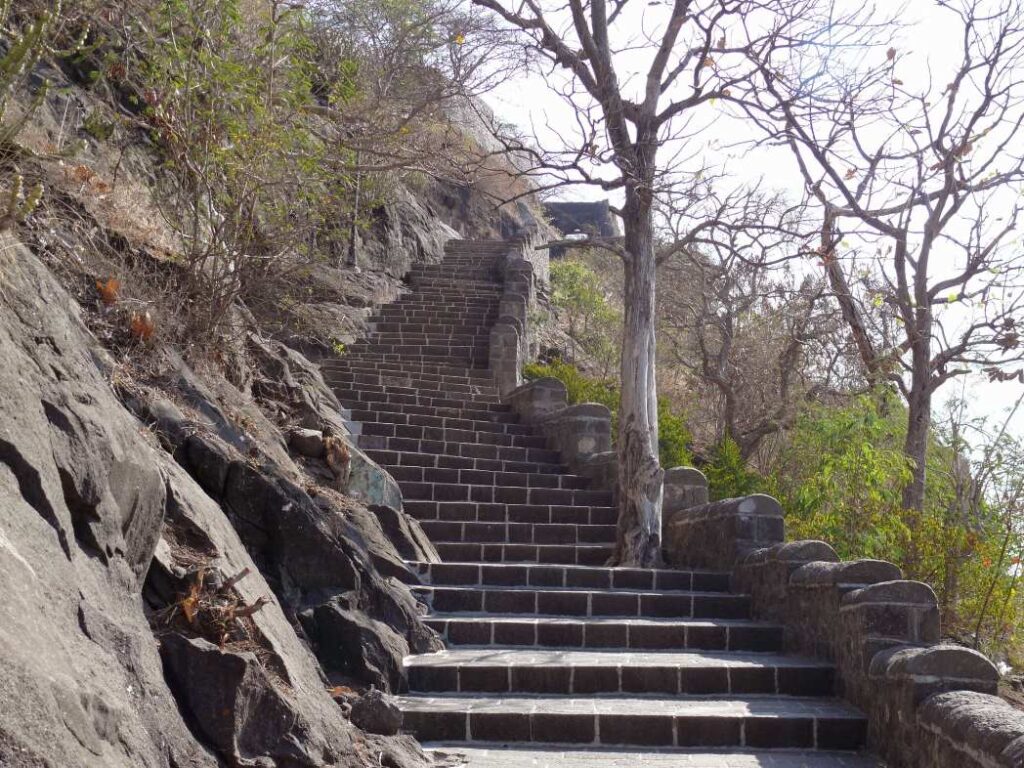
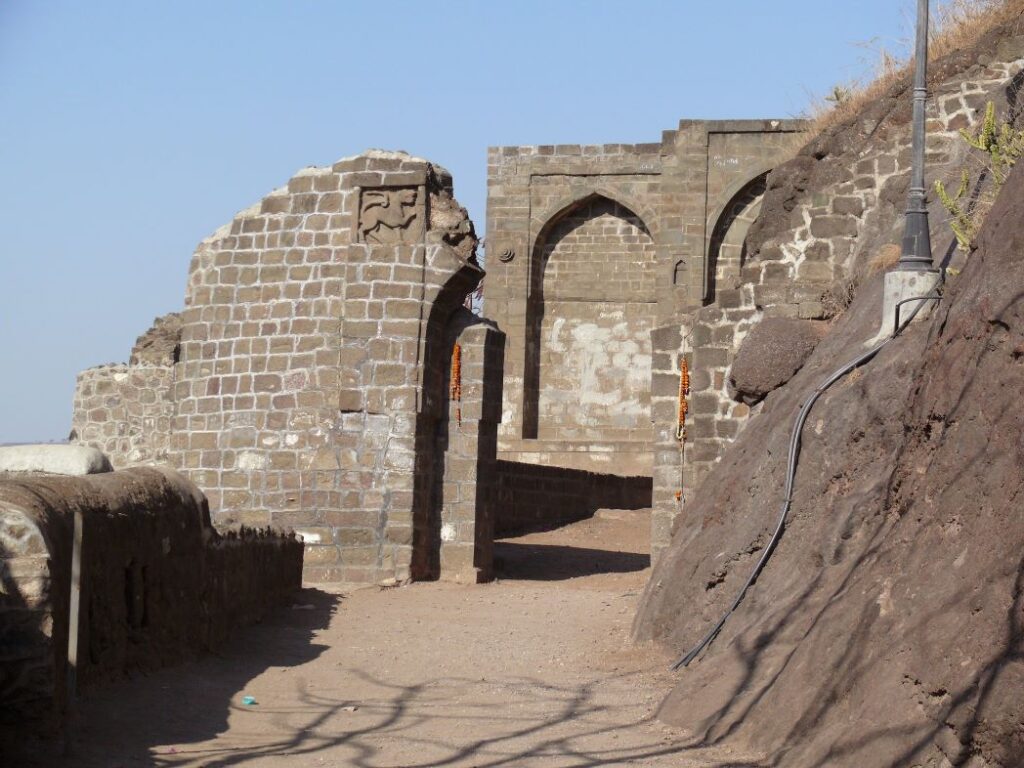
Temples in Junnar
Junnar is home to 2 Ashtavinayaka temples. The Ashtavinayaka Yatra refers to a pilgrimage to the eight Ganesha temples centered around the city of Pune. The Girijatmaj Temple at Lenyadri and Vighnahar Temple at Ozar are situated 25 km away from each other in Junnar.
The Ozar Ashtavinayak temple is located on the banks of river Kukadi in Junnar. In Hindu mythology, it is said that Ganesha had made Ozar his permanent dwelling after he defeated the demon Vighnasur. Hence the Ganesha here is known as Vighneshwar (the remover of obstacles).
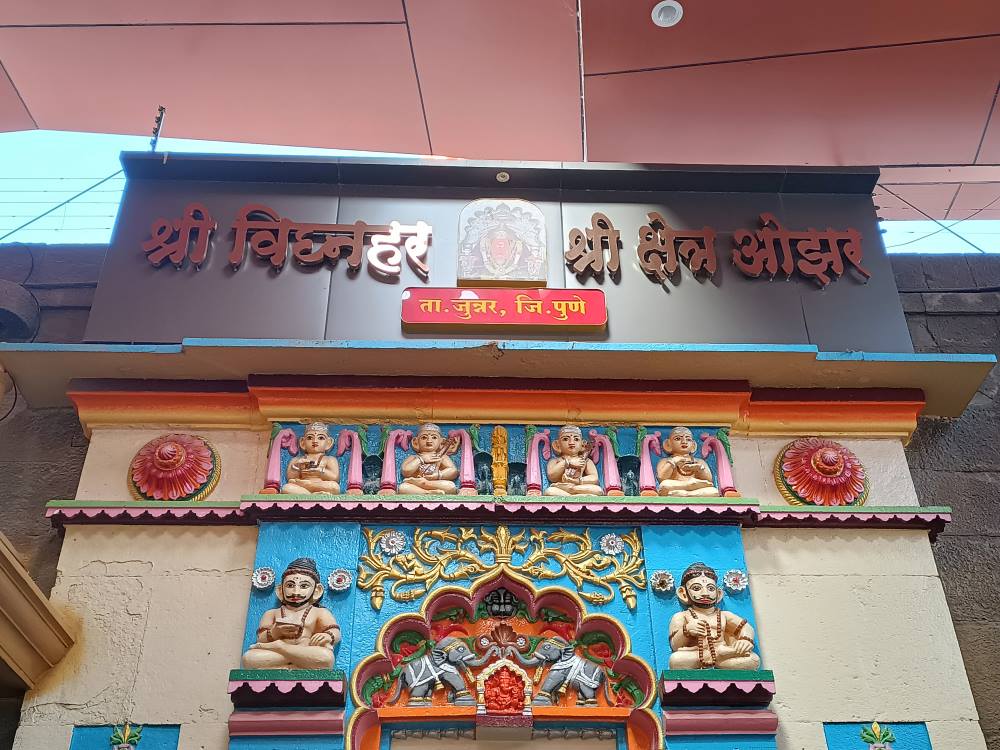
Lenyadri are Buddhist caves located 300 steps atop a hillock and one of these caves has the idol of ‘Girijatmaj Ganesha’, which has been carved in a cave wall and can only be viewed from the rear. Mentions of Lenyadri can be observed in the ‘Ganesha Purana’ as Lekhanparvat or Jeernapur. The best part about this temple is that there are no lights in the cave and yet the idol is lit up by the sun-rays!
Other than Ganesha temples, the region has other temples such Brahmanath Temple, Hatkeshwar temple, Omkareshwar temple & Khireshwar temple among others. Each temple has intricate sculptures and ornate walls and pillars.
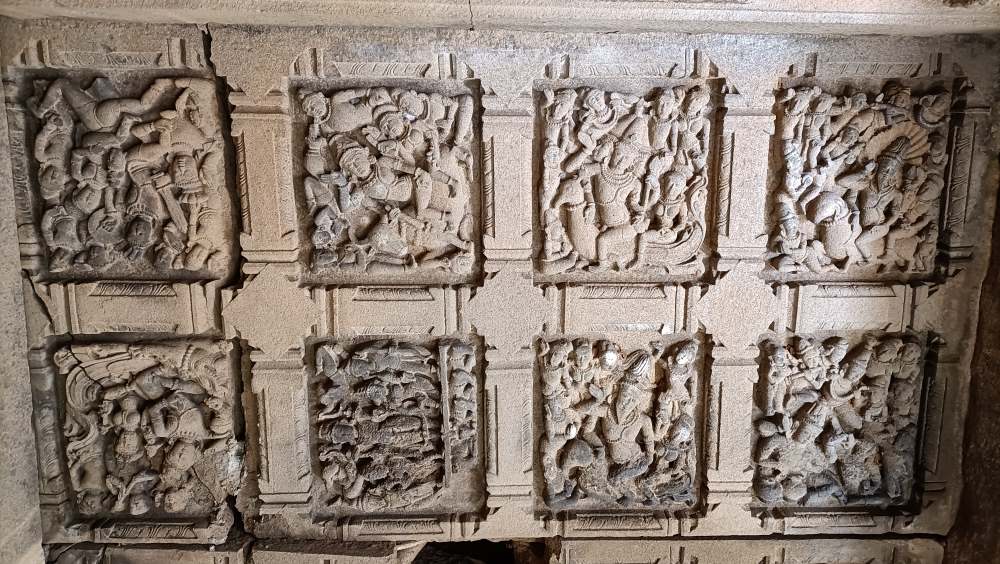
Caves in Junnar
Junnar has the highest number of caves in Maharashtra – almost 200 and most of them are Buddhist caves. Lenyadri, Naneghat, Chavand, Suleman, Manmodi, Tulja and Shivneri are some of the most popular caves either having inscriptions or frescoes.
Among them all, the Lenyadri cave complex stands out as the most renowned tourist and pilgrimage destination, showcasing a captivating fusion of Buddhist and Hindu beliefs. Among the 30 caves, 28 are viharas (monasteries), while caves 6 and 14 serve as Chaityagrihas (prayer halls). There are approximately 300 steps to reach the caves and Ganesha temple. Visitors are required to remove footwear before entering caves and temple. Since the rocks get really hot, wear socks to avoid burnt feet.
The Lenyadri caves also reveal ties to the early Hinayana phase of Buddhism. Cave 7 is a highly revered Ganesha temple. According to legends, these caves mark the birthplace of Lord Ganesha, as it is believed that Goddess Parvati meditated here for 12 years to conceive him.
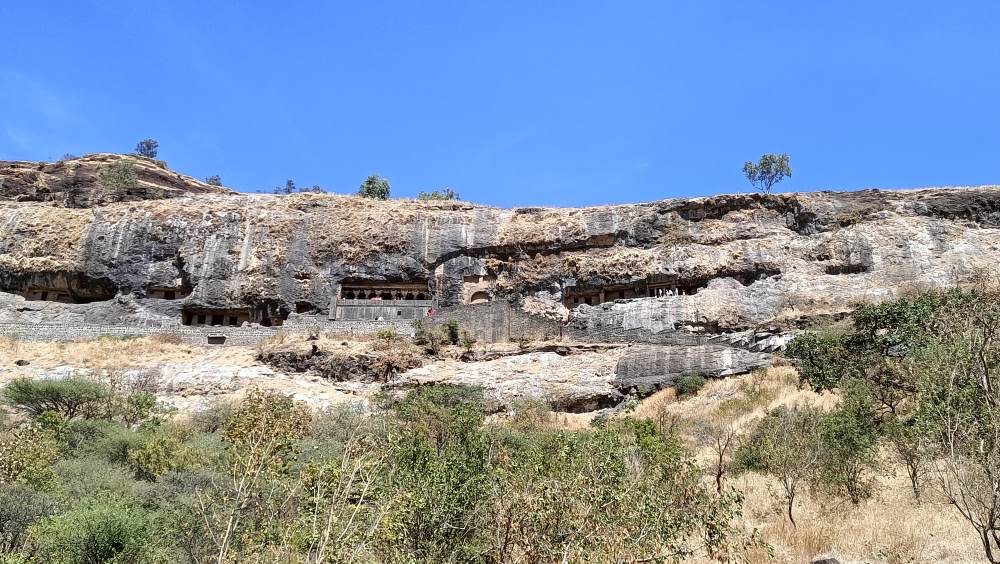
Nature tourism in Junnar
Junnar is blessed with Sahyadri ranges (part of Western Ghats) on all sides making it a perfect spot for trekking. It is also the only taluka in Maharashtra state having the highest number of dams such as Pimpalgaon Joga Dam, Chilewadi Pachaghar Dam, Yadgaon Dam, Manik Doh dam and Vadaj dam. The water in each of these dams offer a respite from the sweltering heat and is a perfect hangout spot for picnics (but do not litter). I would discourage swimming because the water is deep and the areas are secluded in case help is needed.
The Western Ghats of Sahyadris always create an amazing ecosystem especially in monsoon where the entire area comes alive with thousands of waterfalls cascading on the hill rocks. Malshej Ghat and Darya Ghat in Junnar are extremely famous for the same. Bikers drive in monsoon all the way from Pune just for this spectacle.
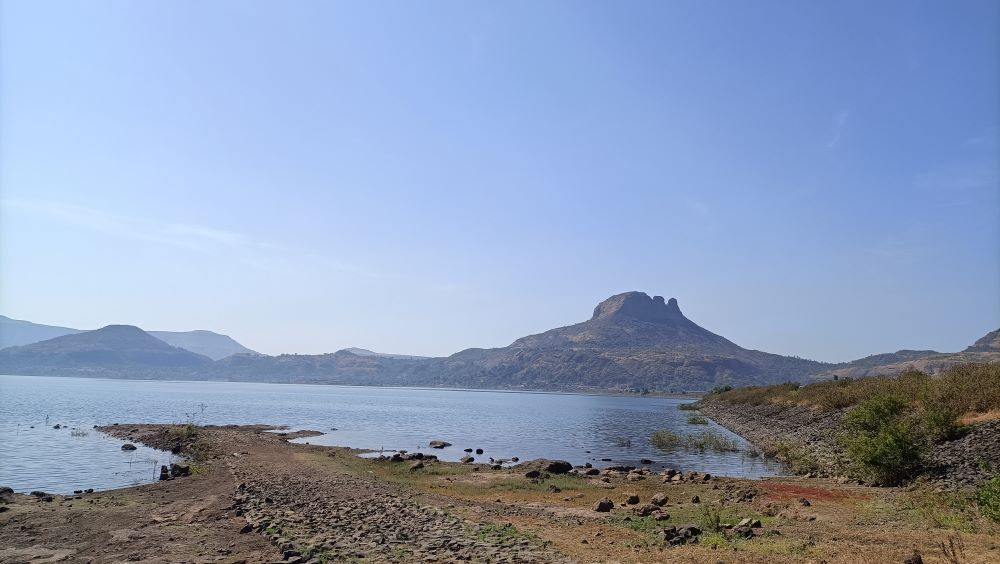
Agrotourism in Junnar
Thanks to the placement of the world’s largest radio telescope, GMRT (Giant Metrewave Radio Telescope), Junnar is untouched by industries in its vicinity. The only small scale factories are the sugar factories due to ample sugarcane farming in the area.
One can still see communities living a simple life doing agricultural activities and cattle rearing. This is why the air is still fresh in Junnar and it is known as the “Sanitarium of India”. Visitors actually come to spend time here so as to cure their breathing problems.
Junnar also has a wide range of traditional farming of rice and grapes. And the locals have converted their farms into agro tourism sites inviting tourists from cities to live on the farm.
One particularly interesting agro tourism site is Hmmbrr where the site is developed using indigenous cow species. The entire concept revolves around cow therapy and consuming organic milk and allied products. The scientific and traditional Indian knowledge is the basis of setting up this site and it is sure to question your beliefs and lifestyle.
Also Read: Nashik Tourist Places
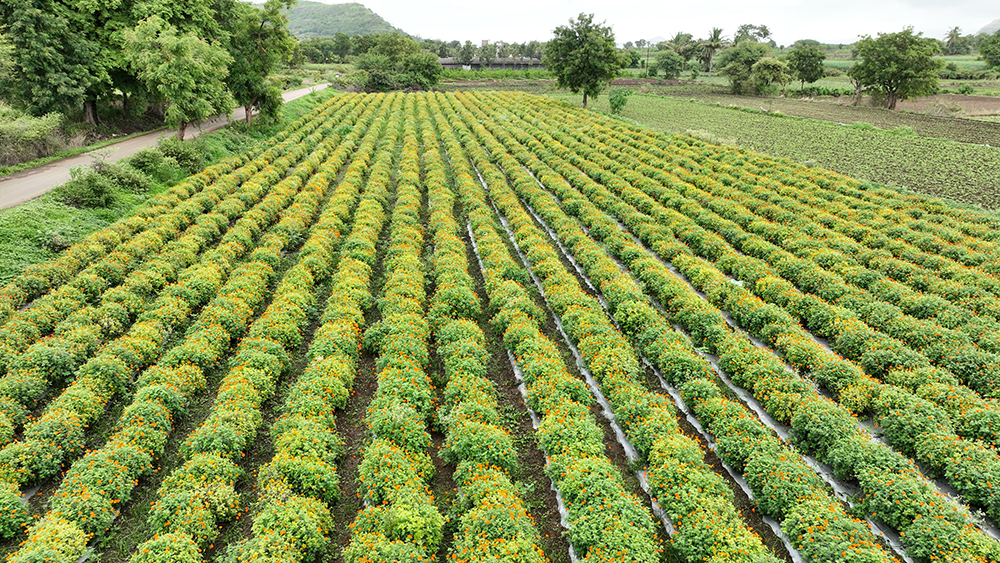
Adventure sports in Junnar
There are options for adventure sports in Junnar such as zip lining overlooking the Sahyadris, sky biking and Quad bikes or ATVs (all terrain vehicles). This is available right outside Girija Hotel.
When I visited during the Shivneri festival, paramotoring was also available.
Thanks to the many dams in Junnar, a lot of water sport options are also available. Speed boats and pedal boats are some of the options available.
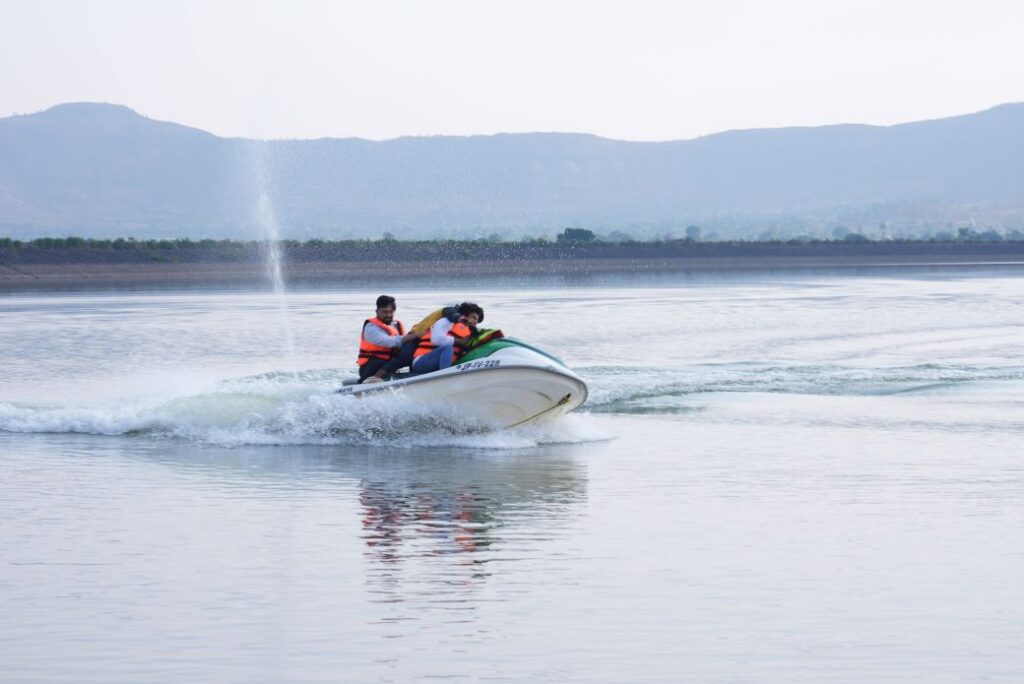
Hindavi Swarajya Mahotsav
The Hindavi Swarajya Mahotsav is celebrated every year at Shivneri Fort in Junnar. Locals dress up in their best traditional attire with saffron flags and procession are held across the town. People from across the Maharashtra state visit Junnar during this time to pay their respects to Shivaji’s legacy in his birth town.
Thankfully, I was able to visit the festival this year (2024) and the celebrations were full of history, immersed in cultural displays, live theater playing the most popular play ‘Janata Raja’ and exhibits paying homage.
Streets were full of memorabilia selling his statues and flags with his face drawn on it. From lively processions to captivating cultural performances, each moment was infused with historical significance and deep respect.
I couldn’t help but be moved by the overwhelming sense of pride and unity that filled the atmosphere, reinforcing the enduring ideals embodied by Shivaji Maharaj.
The pink trumpet flowers blooming on both sides of the road with the ongoing processions just made the whole atmosphere splendid.
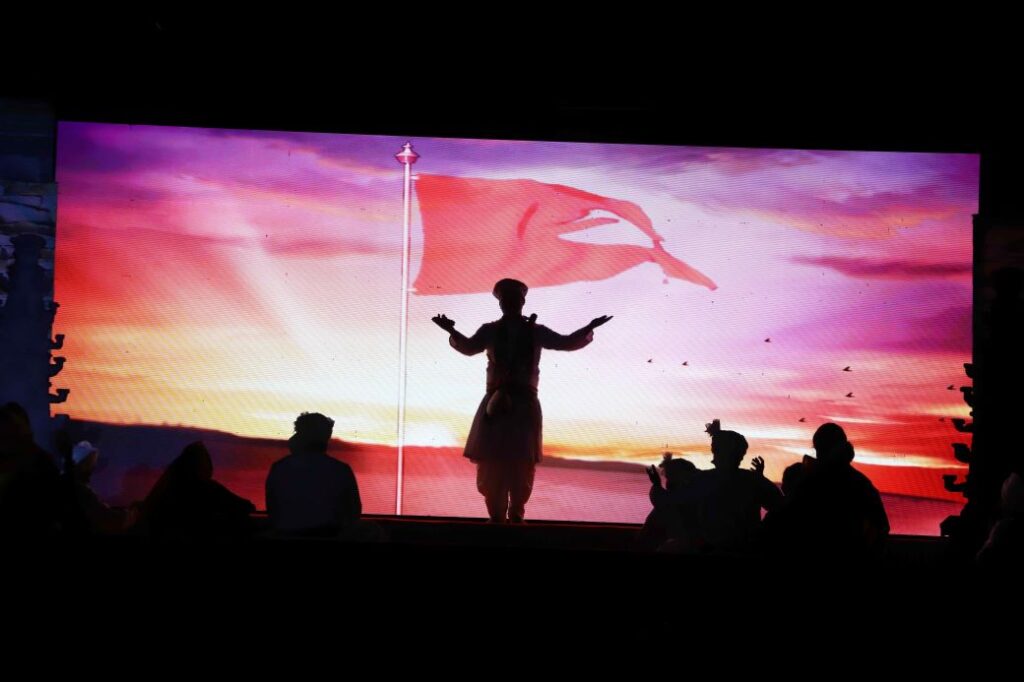
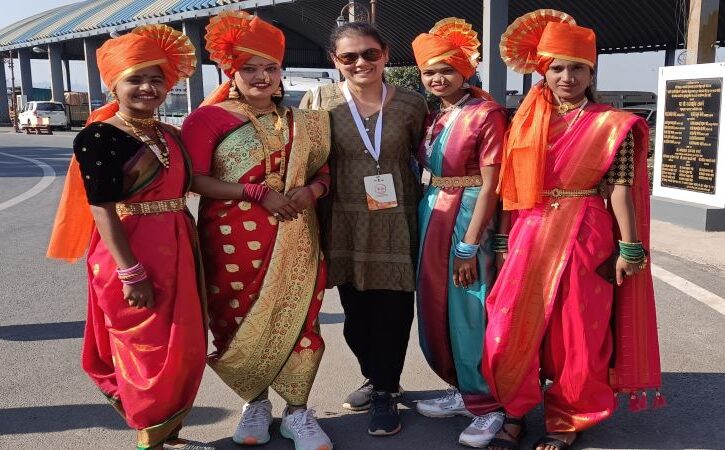
PRACTICAL TIPS FOR JUNNAR TOURISM
How to reach Junnar?
By Road
Junnar can be best reached by road from Pune. It is located 94 km from Pune. Head towards Chakan – Rajgurunagar – Manchar – Narayangaon and reach Junnar.
Mumbai is situated 155 km from Junnar and again the best way to reach via road. To travel from Mumbai use Mumbai Pune Expressway and exit at Talegaon. Head towards Chakan – Rajgurunagar – Peth – Manchar – Kalamb – Narayangaon – Junnar.
There are Maharashtra State Transport Corporation buses (MSRTC) from Mumbai and Pune to Junnar.
By Train
Pune Railway Station is the nearest railway station to reach Junnar. Pune is well connected to most cities in India via railway network. Talegaon Dabhade railway station is situated around 82 km from Junnar but not well connected and few trains stop here.
Best time to visit Junnar?
Junnar can be visited all throughout the year. However, summers get really hot and trekking to caves and forts can get arduous. The hot stones can burn feet so wearing comfortable footwear is recommended.
Monsoons are the best time to visit Junnar as the lush landscape transforms into vibrant greenery, and the waterfalls reach their peak magnificence.
Winter is ideal for trekkers, especially considering the relatively cooler temperatures compared to other months.
If you are a history enthusiast, the best is to plan a trip around Shivneri festival. Although the Shivneri fort and all surrounding forts get crowded on 19th February, the festive vibe is really amazing. Hire a local guide who can explain the history and decode the inscriptions. Comment on this blog if you want to know the guide details.
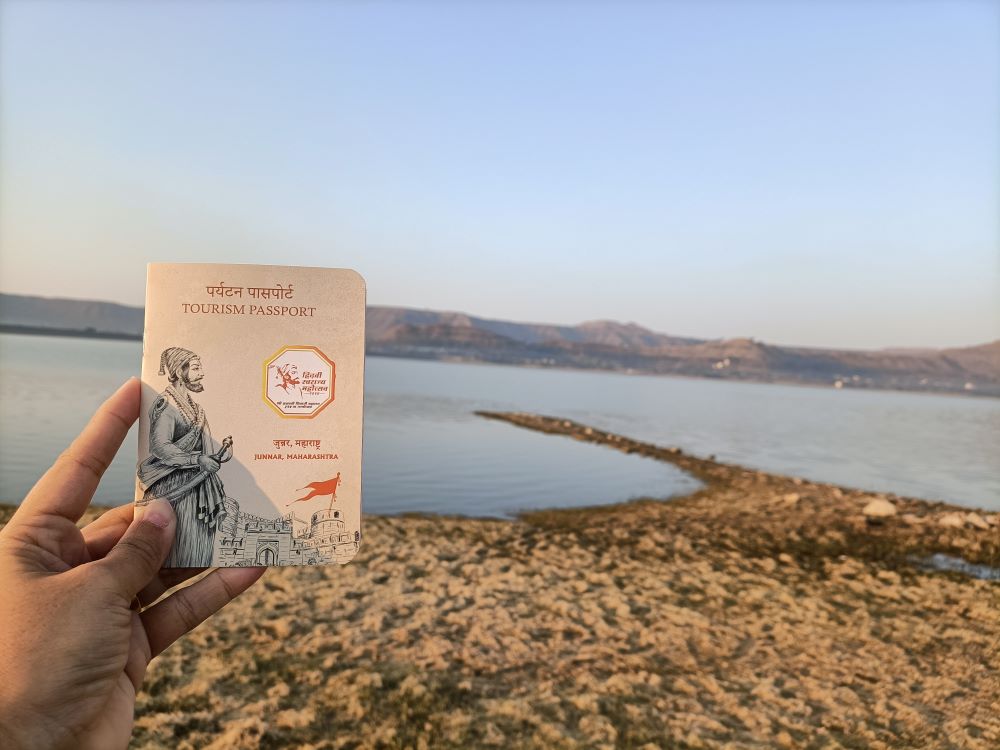
Stay in Junnar
There are basic accommodation options available in Junnar or the nearby Malshej ghat. If you are opting for agrotourism then there are farm stay options too. Have a look at what is best for you.
Budget Options
Girija Hotel
Girija Hotel has rooms and there is a khanaval (Maharashtrian thali restaurant with fixed menu). The Lenyadri caves are actually visible from the hotel windows!
They have also developed an adventure zone right outside their premises so everything is nearby.
It is best to book a room in advance by calling +91 84079 88260.
MTDC Resort, Malshej Ghat
Located 26 km away from Junnar in Malshej, this resort is a good option especially in monsoon. But book in advance as it gets sold out really fast.
Luxury Options
Saj By The Lake
Located on the Pimpalgaon Joga Dam backwaters and encircled by lush greens, sits Saj By The Lake. The peaceful setting is soothing and ensures that visitors are enthralled by the serenity. Monsoon is the best time to visit to watch the mist overlooking the Sahyadris while dipping the feet in their pool.
Book Here: Saj By The Lake
Blu Water Resort Malshej
Almost next to Saj, is another option of Blu Water Resort. It also overlooks the Pimpalgaon Joga Dam backwaters; it is luxury wrapped with comfort.
Book here: Blu Water Resort
Agrotourism / Farm Stay Options
HmmBrr Agro Resort
HmmBrr Resort is a humble venture with a raw and rustic setting, where one can experience the stillness of nature. Set across mango trees, the rooms are aesthetically designed quaint spaces. With Satvik aahar and cow therapy, one feel rejuvenated after staying here. Highly recommended.
Book here: HmmBrr
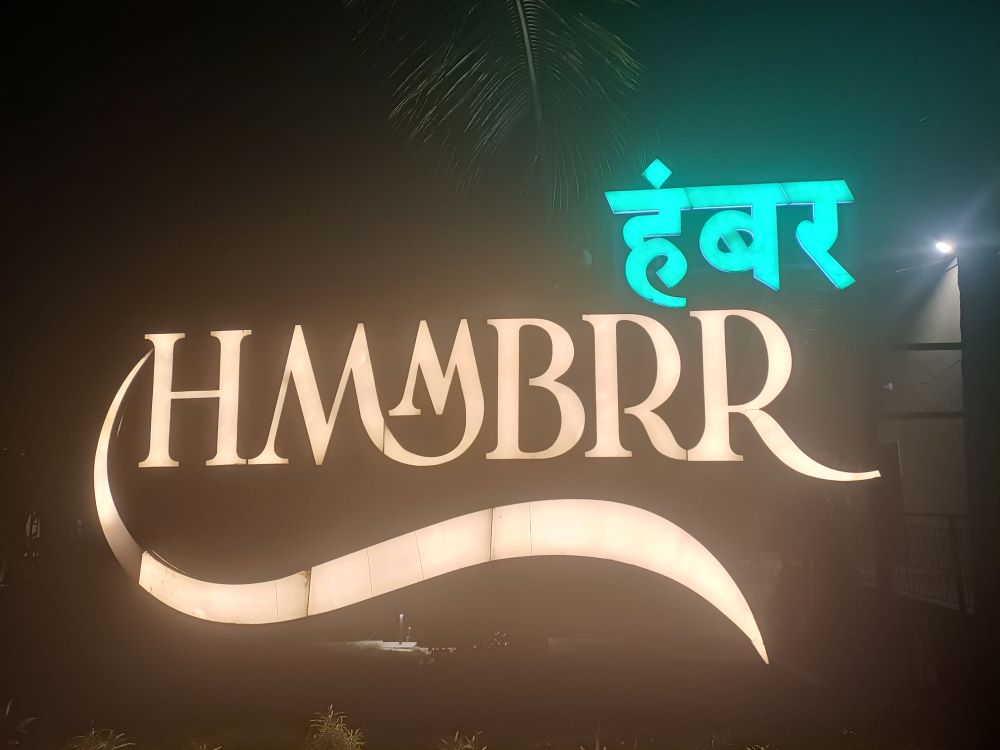
SUSTAINABLE TIPS FOR THINGS TO DO IN JUNNAR | JUNNAR TOURISM
- Do not feed the wildlife, especially the monkeys at Lenyadri. Carry food or water bottles in a bag that is not visible to them.
- Carry your own refillable water bottle. Avoid purchasing PET water bottles unless absolutely necessary.
- Do not trash the caves, temple areas, dam backwaters with wrappers and uneaten food. Use designated areas and right-colored bins for disposing of waste.
- Be mindful of all the signs and follow them respectfully especially in temples – do not photograph the idols at Ashtavinayak temples.
- Respect the ancient structures of temples and other structures by not sitting on them.
- Do not write on the pillars and walls of forts and monuments.
Read More Posts from Maharashtra
Disclosure: I was invited by Maharashtra Tourism to explore Junnar. However, all opinions in this post are unbiased and of my own.
Disclaimer – This post contains affiliate links. It means it adds no extra cost to you if you book through the link but I get a referral bonus which helps me earn a little to keep this website up and running.
Pin this post!
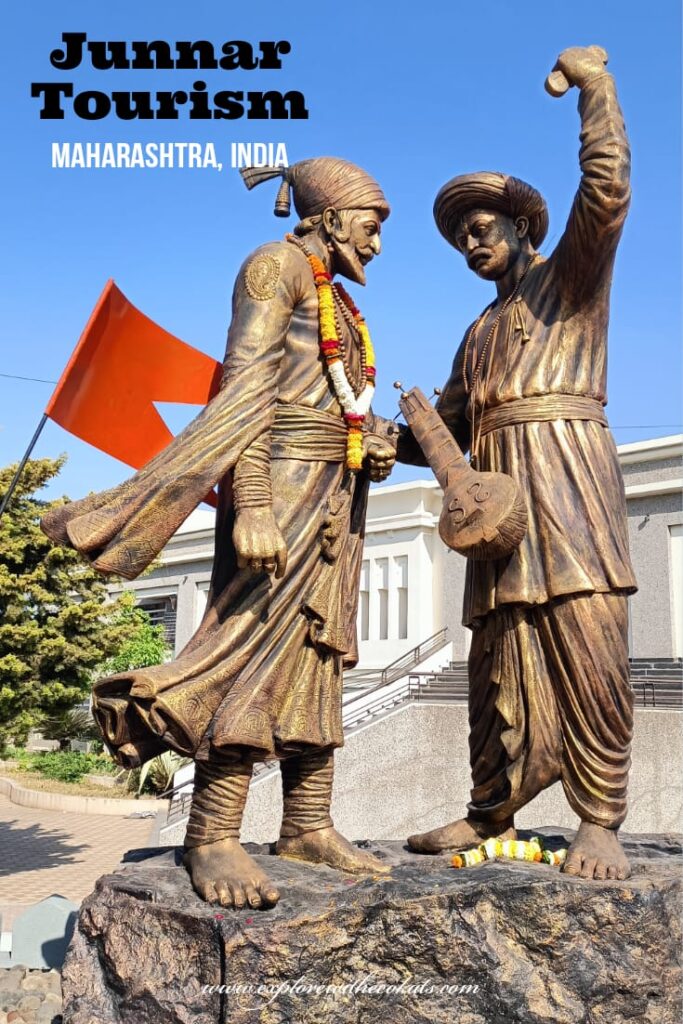

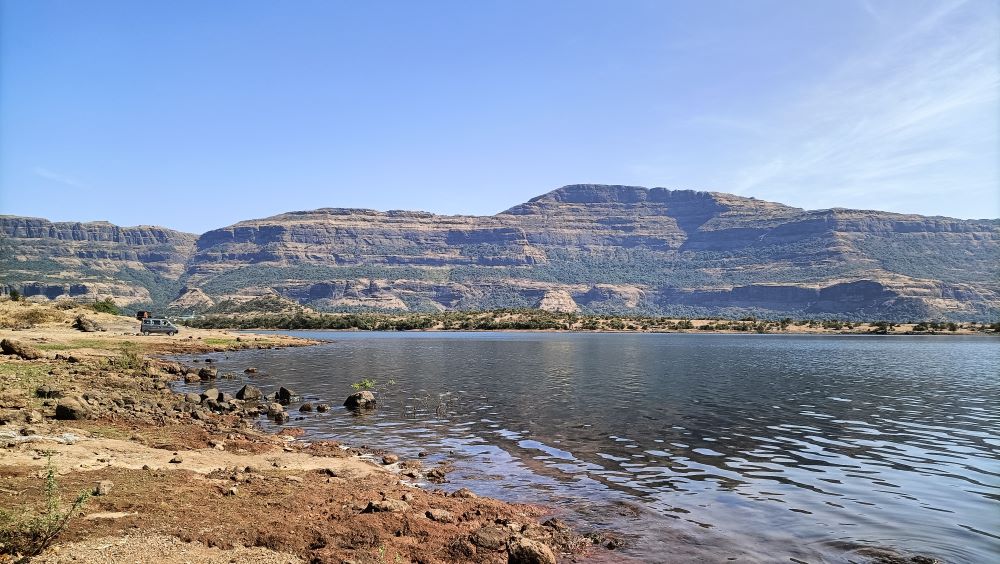
1 comment
Absolute informative.